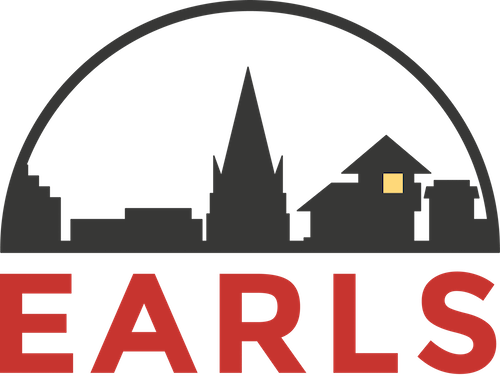RLS & CHILDREN
RLS/WED in children?
Restless-Legs-Syndrome (RLS) or Willis-Ekbom-Disease (WED) is a neurological disorder that often affects adults. What few people know is that RLS sometimes begins in childhood and adolescence.
In retrospective studies, affected adults reported that their symptoms began before their 20th birthday in 40% of cases and even before their 10th birthday in 12% of cases. In most known cases, RLS is genetically determined.
Families affected by RLS/WED are often so sensitive to the discomfort of RLS/WED that they are able to recognise possible RLS-related behaviours in their children or even grandchildren at an early stage.
How common is RLS/WED in children?
The prevalence of RLS/WED in children is thought to be 2-4%. However, the diagnosis is rarely made in paediatric practice, so it is likely that RLS/WED is under-diagnosed and under-treated in childhood. Children are particularly at risk if other family members have the condition, as it is thought to have a strong genetic background.
Symptoms of RLS/WED in children
The typical symptoms in adults do not automatically apply to children and teenagers. Sleep disturbance may be the main symptom. Children and teenagers with RLS/WED also try to relieve their symptoms by moving around. They walk around, run and rock, constantly changing their leg or sleeping position. Sleep disorders often lead to problems with concentration, learning and performance, and behaviour. However, RLS/WED is less commonly diagnosed in children. It is thought that misdiagnoses such as growing pains or ADHD occur in paediatric practice. There is a risk that children with RLS/WED are not treated or are treated incorrectly.
How is RLS/WED diagnosed in children?
In children, there is a difference between genetic RLS/WED, where the cause is not yet known, and RLS/WED caused by another condition, such as reduced kidney function or iron deficiency. Diagnosis is based on clinical symptoms. Usually, a discussion and examination by the doctor is enough to diagnose RLS/WED. It is important for the child to describe his or her symptoms in his or her own words, adapted to his or her level of development. In addition, an examination in a sleep laboratory may be arranged, or a test may be carried out to see if the symptoms subside after taking certain medications.
There five diagnostic criteria for children:
Urge to move the legs (less frequently the arms), usually accompanied by or caused by unpleasant sensations in the legs.
Urge to move or unpleasant sensations begin or worsen during periods of rest, such as lying down or sitting down.
Urge to move or uncomfortable sensations are partially or completely relieved by exercise (e.g. walking, stretching), at least as long as the activity continues.
Urge to move or uncomfortable sensations are worse in the evening or at night, or occur only in the evening/night.
Other diseases or behavioural disorders are excluded.
It is important that the child describes the RLS/WED symptoms in his or her own words. It is also important to consider the child's developmental stage and to use children's drawings.
Differential diagnosis: Growing pains, ADHD or RLS/WED?
The diagnosis of RLS/WED in children and adolescents should ideally be made by a neurologist with experience of RLS/WED. Other conditions that should be ruled out include growing pains, rheumatic or malignant diseases of the extremities, obstructive sleep apnoea syndrome (OSAS), periodic leg movements during sleep (PLMS), narcolepsy and mimics.
Differentiation from Attention Deficit Hyperactivity Disorder (ADHD)
Differentiation from ADHD is particularly important because of the high comorbidity of both conditions. Both are associated with iron deficiency and should be treated appropriately when they occur together.
Children with ADHD also have difficulty concentrating during the day, rarely sit still and have limited attention in school. ADHD, however, is characterised by hyperactivity with excessive motor activity and impulsivity.
In RLS/WED, behavioural problems are a consequence of sleep disturbances. However, the treatments for the two disorders are very different.
Treatment for children
In most cases, children are not affected to the extent that their quality of life is impaired. In such cases, it is important to simply observe the child and not alert them to the possibility of RLS/WED. This is because children may not initially recognise the discomfort as something abnormal because it has always been there and is therefore part of everyday life. In most cases, RLS/WED does not become severe enough to require medication until later in life. However, if it does become necessary, it should be delayed as long as possible. Medication for RLS/WED in children is very specific and should only be given by experienced doctors.
23 September is World RLS Day. This year we want to use our activities to raise awareness that children can also suffer from RLS/WED. RLS/WED is a neurological disorder with a genetic component and often runs in families. Like adults, children with RLS tend to relieve their symptoms by moving their legs. Parents or healthcare providers often mistakenly label the child's discomfort as "growing pains". In the classroom, attempts to relieve the discomfort of RLS may be interpreted as inattentiveness, hyperactivity or disruptive behaviour. How common is RLS in children, how is it diagnosed and how is it treated? Learn more in our new video with paediatrician Julian Mollin.
Would you like to know how children with RLS feel and at the same time learn something new about RLS in children? Then watch our new video in which children with RLS express their situation in pictures and in which those affected talk about their experiences with RLS in childhood.
